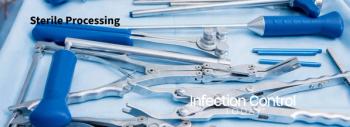
A Policy Conundrum: Unused Items
Q: At our facility, we discussed in detail that under no circumstances can an opened but not used rigid container be sent from the OR to the clean side of SPD whether the patient was in room or not. Can you help with this?
By Nancy Chobin, RN, AAS, ACSP, CSPM, CFER
Q: At our facility, we discussed in detail that under no circumstances can an opened but not used rigid container be sent from the OR to the clean side of SPD whether the patient was in room or not. Can you help with this?
A: This is a common question received. There is a misconception that if a set is opened within the OR room but not used, especially if the patient has not entered the room that the set is considered clean and therefore, can be returned to the clean area of SPD. However, there are too many variables that can occur which can lead to processing failures.
The Association for the Advancement of Medical Instrumentation (AAMI)’s Comprehensive Guide to Steam Sterilization and Sterility Assurance in Health Care Facilities (2013) does address this specific issue.
It states, “5.3 Disposition of sterile items (issued but not used). Unused items that previously have been packaged, sterilized, and issued to a controlled environment such as the OR may be returned to the sterile storage area if the integrity of the packaging has not been compromised and there is no evidence of contamination; such items should be the first to be dispensed when needed. Reusable items that have been opened or that have damaged packaging should be unwrapped and reprocessed through decontamination in accordance with departmental policies and procedures. Disposable items that have been opened or that have damaged packaging should be discarded; such items should not be reprocessed unless the manufacturer provides written IFU for reprocessing and all FDA requirements for the reprocessing of single-use items are met (
AAMI makes this recommendation based upon the fact that it cannot be determined what, if any, contamination occurred to the contents of the container. When items are sterilized in a sterilizer, the sterilization is dependent upon reduction of the microbial level to enhance the probability of sterilization. Furthermore, AAMI and all rigid container manufacturers recommend that after each use, the sterilization container be disassembled (e.g. removal of filter retention plates and any other specified components) and completely cleaned. The cleaning process usually requires cleaning with a neutral pH enzymatic detergent (unless otherwise directed by the container manufacturer) by a manual or mechanical process. Containers should never be “wiped” out and never “cleaned” with environmental disinfectant wipes. Neither of these processed are compliant with manufacturer’s instructions for use.
Therefore, any rigid containers that are opened should be returned to your decontamination area where the container and the contents can be cleaned to the specific manufacturer’s instructions for use.
While it is commendable that the OR staff is being considerate of the additional workload for the SPD staff, compliance with standards and patient safety must take precedence.
Nancy Chobin, RN, AAS, ACSP, CSPM, CFER, is a sterile processing consultant and educator.
Reference: Association for the Advancement of Medical Instrumentation, “Comprehensive Guide to Steam Sterilization and Sterility Assurance in Health Care Facilities, (ST-79), 2013. Section 5.3.
Newsletter
Stay prepared and protected with Infection Control Today's newsletter, delivering essential updates, best practices, and expert insights for infection preventionists.






